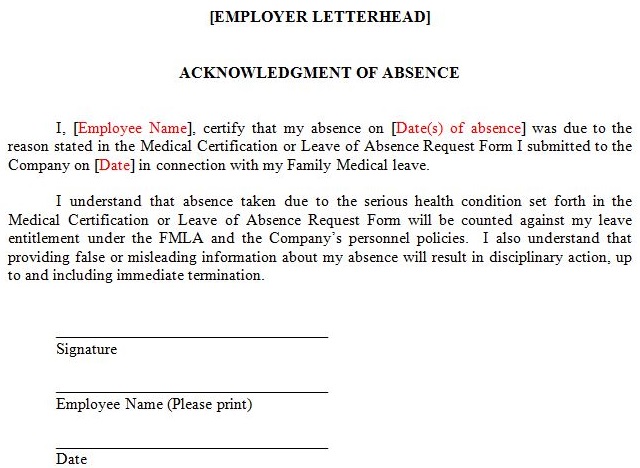Viewpoint: 10 Ways to Combat Summertime FMLA Leave Misuse
Practical steps can keep employees honest when warm weather beckons

How can employers minimize the chances of getting stung by Family and Medical Leave Act (FMLA) leave abuse, especially as summer nears? I've shared some of these ideas before but here is an update of my Top 10 List:
1. Prepare a list of probative questions you ask all employees when they request time off.
Employers, you have the right to know why your employee can't come to work! So, prepare a list of questions that you ask your employees when they call in an absence. These will help you better determine whether FMLA is in play and if the request might be fraudulent:
- What is the reason for the absence?
- What essential functions of the job can they not perform?
- Will the employee see a health care provider for the injury/illness?
- Have they previously taken leave for this condition? If so, when?
- If they are calling in late in violation of the call-in policy, when did the employee first learn he/she would need to be absent? Why did they not follow the Company's call-in policy?
- When do they expect to return to work?
2. Enforce call-in procedures.
Every employer should maintain a call-in policy that, at a minimum, specifies when the employee should report any absence (e.g., "one hour before your shift"), to whom they should report the absence, and what the content of the call off should be. If you don't have call-in procedures set up in an employee handbook or personnel policy that is distributed to employees, begin working now with your employment counsel to put these procedures in place. They will help you better administer FMLA leave, combat FMLA abuse and help you address staffing issues at the earliest time possible.
As I referenced in a previous blog post, you should consider aligning your FMLA call-in policies with your regular paid time off (PTO) policies.
3. Certify … and recertify!
Clearly, one of the best tools employers can use to fight FMLA abuse is the medical certification form. Unfortunately, all too many employers fail to obtain (or fail to do so in a timely manner) from the employee the medical information necessary to determine whether the employee suffers from a serious health condition and even is entitled to leave. Keep your employees honest — require them to certify their absence and seek recertification at the earliest opportunity. Require medical certification to initially verify the serious health condition, upon the first absence in a new FMLA year, and when the reason for leave changes.
4. Follow up on certification.
Where the medical certification form does not efficiently answer the questions posed on the form or the health care provider's responses tend to raise doubts, employers should immediately communicate with the employee to cure the deficiencies and/or shed light on any suspect information provided in the form.
In your correspondence, specifically list the unanswered or incomplete questions and provide the employee with a deadline of at least seven calendar days to fix the deficiencies. Here, you might consider asking questions that probe further into the information you find particularly suspect. Also, seek clarification whenever the employee has failed to cure and the certification remains incomplete or insufficient.
Additionally, consider using a physician or a nurse to contact the employee's health care provider on the employer's behalf (but remember: you must have the employee's permission to contact the employee's health care provider).
5. Discuss with the employee your expectations during leave.
This one is quickly becoming my favorite go to tactic. When you first approve leave — particularly intermittent leave — take the time to discuss with your employee your expectations for taking FMLA leave. Ensure that your employee understands the call-in requirements (i.e., where to call into and what basic information you expect that the employee will provide about their need for leave), certification obligations, any check-in obligations, and your expectations for proper use of FMLA leave.
These expectations should be summarized in a document that you provide your employee, who should sign off on it. This document will be helpful down the road if you need to defend your actions, as it will establish that the employee was well aware of your expectations in taking FMLA leave.
6. Have employees complete a personal certification.
Upon return from any leave of absence (FMLA or otherwise), ask the employee to complete a personal certification asking them to confirm that they actually took leave for the reason provided. The benefit of using this kind of form is fairly straightforward: In the event that the employee takes leave inconsistent with the stated reason, the employer can discipline him/her for falsification of employment records.
In doing so, you avoid having to make the argument that they abused FMLA leave, which comes with some tricky legal analysis. Here, you simply argue that the employee falsified a record and you took action as you would in any other situation where an employee falsified a document. My recommended form looks like this:
7. Check in on your employees and make them stay put.
Want to be really aggressive but operate within the law? Some employers explicitly tell employees that it is their policy to check in on the employee if they are using paid sick leave, and then they actually check in on them.
Taking this one step further, some clients require their employees to remain in the immediate vicinity of their home while they are recuperating. If they don't follow this policy, they face discipline. Think this tactic is illegal? The 3rd U.S. Circuit Court of Appeals upheld this very approach.
8. Follow up on patterns of absences.
Monday/Friday absences, and taking days off around a holiday to extend time of, smack of FMLA abuse. If you witness a pattern of absences over even a modest period (e.g., over a series of weeks or in back-to-back months), we arguably have the right to reach out the employee's physician. Here, we follow the FMLA regulations (29 CFR 825.308) and ask the employee's physician to confirm for us whether the pattern you're witnessing is consistent with Johnny's serious health condition and his need for leave.
9. Scheduling medical treatment around your business operations.
Require that employees make a reasonable effort to schedule medical treatment when it's least disruptive of business and consider temporarily transferring employees (to an equivalent position) where leave is foreseeable based on planned medical treatment, if this would be less disruptive to business operations.
Too many employers simply give up on this requirement, allowing employees to call the shots as to when they will obtain medical treatment, and the employee's preference is smack dab in the middle of the workday.
10. Conduct a comprehensive audit of your FMLA practices.
Work with your employment counsel to ensure that your FMLA policy and forms are up to date, that you are employing the best strategies to combat FMLA abuse and that your FMLA administration is a well-oiled machine.
Jeff Nowakis a shareholder at Littler, an employment and labor law practice representing management, and author of the FMLA Insights blog, where an extended version of this article originally appeared. © 2021 Jeff Nowak. All rights reserved. Republished with permission.
[SHRM members-only content: FMLA Checklist for Individual Leave Request]
An organization run by AI is not a futuristic concept. Such technology is already a part of many workplaces and will continue to shape the labor market and HR. Here's how employers and employees can successfully manage generative AI and other AI-powered systems.




